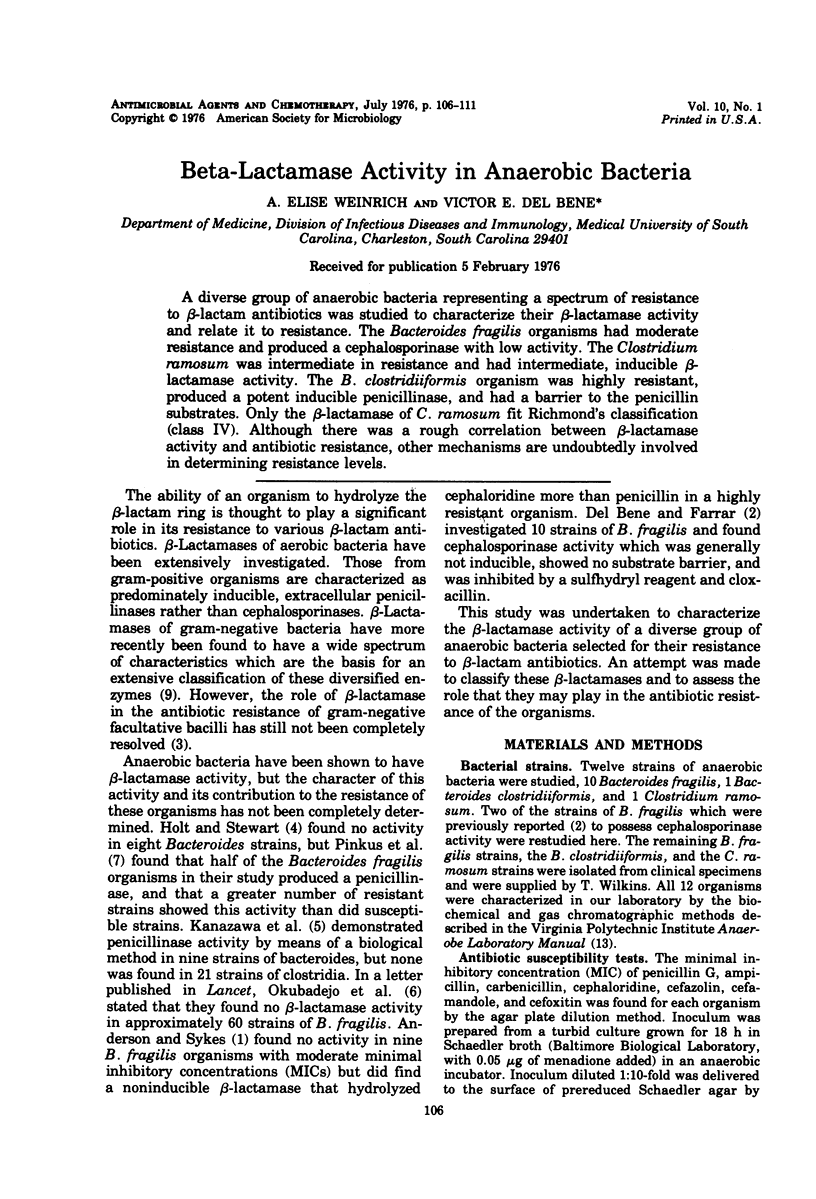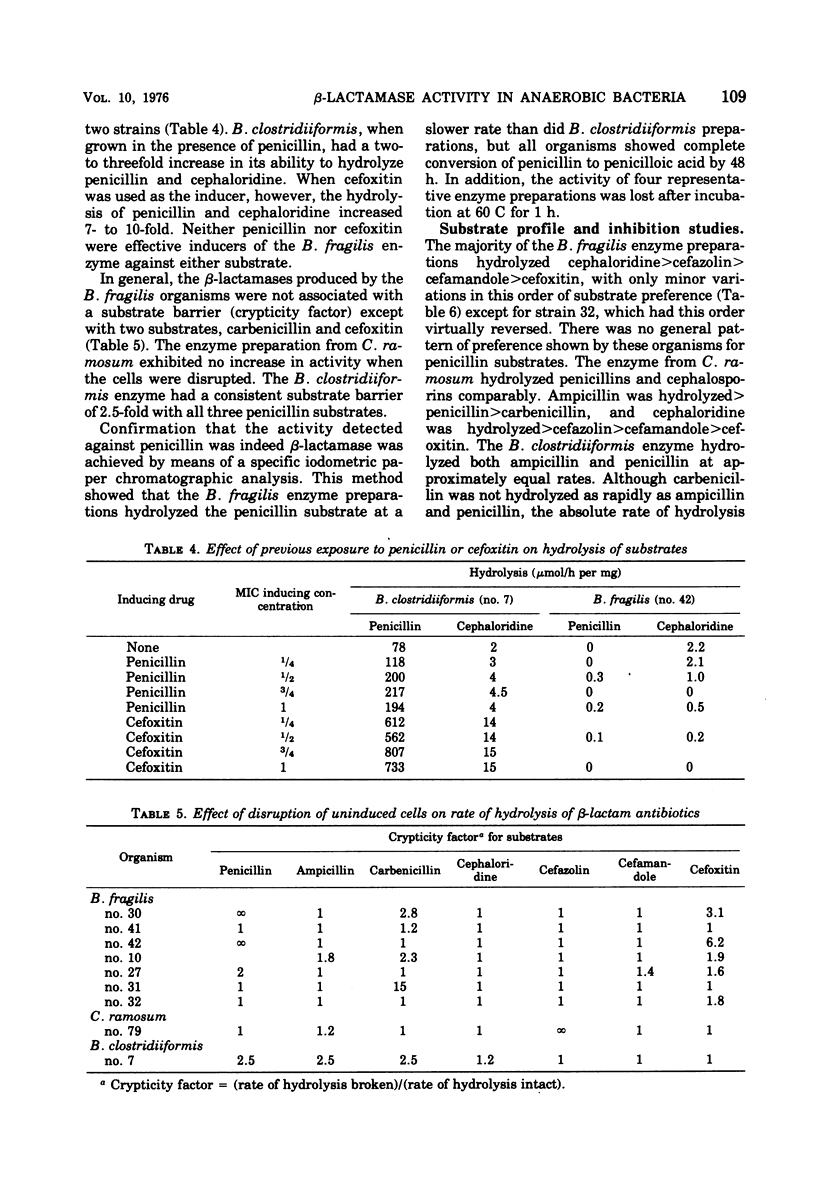Abstract
A diverse group of anaerobic bacteria representing a spectrum of resistance to β-lactam antibiotics was studied to characterize their β-lactamase activity and relate it to resistance. The Bacteroides fragilis organisms had moderate resistance and produced a cephalosporinase with low activity. The Clostridium ramosum was intermediate in resistance and had intermediate, inducible β-lactamase activity. The B. clostridiiformis organism was highly resistant, produced a potent inducible penicillinase, and had a barrier to the penicillin substrates. Only the β-lactamase of C. ramosum fit Richmond's classification (class IV). Although there was a rough correlation between β-lactamase activity and antibiotic resistance, other mechanisms are undoubtedly involved in determining resistance levels.
Full text
PDF





Selected References
These references are in PubMed. This may not be the complete list of references from this article.
- Anderson J. D., Sykes R. B. Characterisation of a -lactamase obtained from a strain of Bacteroides fragilis resistant to -lactam antibiotics. J Med Microbiol. 1973 May;6(2):201–206. doi: 10.1099/00222615-6-2-201. [DOI] [PubMed] [Google Scholar]
- Del Bene V. E., Farrar W. E., Jr Cephalosporinase activity in Bacteroides fragilis. Antimicrob Agents Chemother. 1973 Mar;3(3):369–372. doi: 10.1128/aac.3.3.369. [DOI] [PMC free article] [PubMed] [Google Scholar]
- Farrar W. E., Krause J. M. Relationship Between beta-Lactamase Activity and Resistance of Enterobacter to Cephalothin. Infect Immun. 1970 Nov;2(5):610–616. doi: 10.1128/iai.2.5.610-616.1970. [DOI] [PMC free article] [PubMed] [Google Scholar]
- HOLT R. J., STEWART G. T. PRODUCTION OF AMIDASE AND BETA-LACTAMASE BY BACTERIA. J Gen Microbiol. 1964 Aug;36:203–213. doi: 10.1099/00221287-36-2-203. [DOI] [PubMed] [Google Scholar]
- Okubadejo O. A., Green P. J., Payne D. J. Bacteroides in the blood. Lancet. 1973 Jan 20;1(7795):147–147. [PubMed] [Google Scholar]
- Pinkus G., Veo G., Braude A. I. Bacteroides penicillinase. J Bacteriol. 1968 Oct;96(4):1437–1438. doi: 10.1128/jb.96.4.1437-1438.1968. [DOI] [PMC free article] [PubMed] [Google Scholar]
- Sutter V. L., Finegold S. M. Susceptibility of Anaerobic bacteria to carbenicillin, cefoxitin, and related drugs. J Infect Dis. 1975 Apr;131(4):417–422. doi: 10.1093/infdis/131.4.417. [DOI] [PubMed] [Google Scholar]
- Tally F. P., Jacobus N. V., Bartlett J. G., Gorbach S. L. Susceptibility of anaerobes to cefoxitin and other cephalosporins. Antimicrob Agents Chemother. 1975 Feb;7(2):128–132. doi: 10.1128/aac.7.2.128. [DOI] [PMC free article] [PubMed] [Google Scholar]


